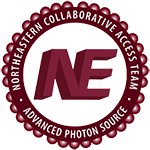Structure of Escherichia coli AMP nucleosidase reveals similarity to nucleoside phosphorylases.
Publication Type:
Journal ArticleSource:
Structure, Volume 12, Issue 8, p.1383-94 (2004)Keywords:
Amino Acid Sequence, Catalytic Domain, Crystallography, X-Ray, Escherichia coli, Formycins, Models, Molecular, Molecular Sequence Data, N-Glycosyl Hydrolases, Pentosyltransferases, Phosphates, Ribonucleotides, Ribosemonophosphates, Sequence Homology, Amino AcidAbstract:
<p>AMP nucleosidase (AMN) catalyzes the hydrolysis of AMP to form adenine and ribose 5-phosphate. The enzyme is found only in prokaryotes, where it plays a role in purine nucleoside salvage and intracellular AMP level regulation. Enzyme activity is stimulated by ATP and suppressed by phosphate. The structure of unliganded AMN was determined at 2.7 A resolution, and structures of the complexes with either formycin 5'-monophosphate or inorganic phosphate were determined at 2.6 A and 3.0 A resolution, respectively. AMN is a biological homohexamer, and each monomer is composed of two domains: a catalytic domain and a putative regulatory domain. The overall topology of the catalytic domain and some features of the substrate binding site resemble those of the nucleoside phosphorylases, demonstrating that AMN is a new member of the family. The structure of the regulatory domain consists of a long helix and a four-stranded sheet and has a novel topology.</p>
